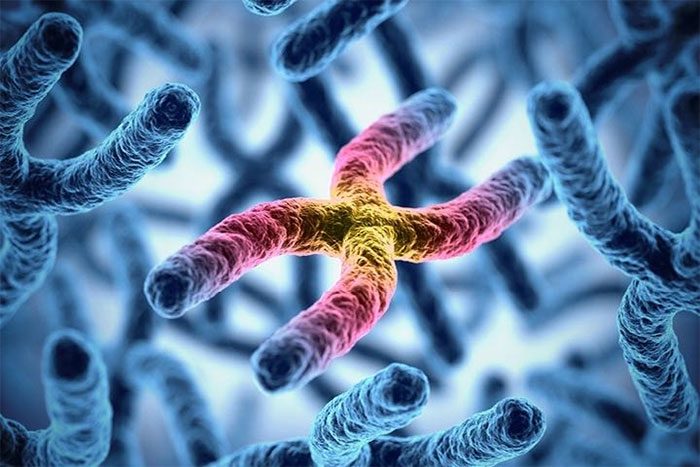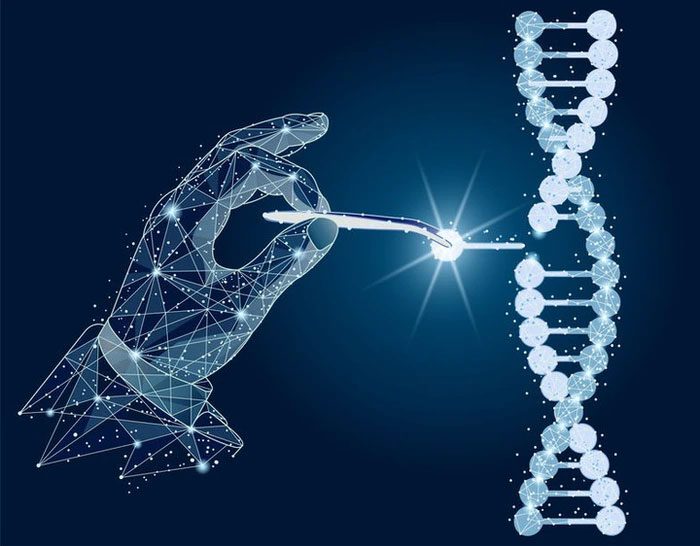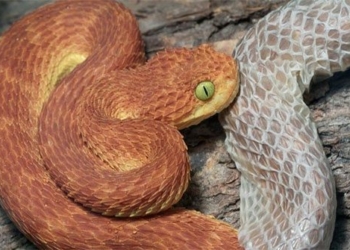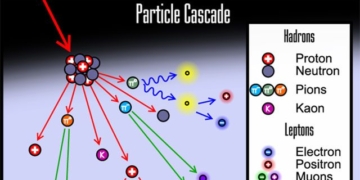You may have heard that 137 is a magic number, but if you ask a geneticist, they will tell you that the real magic number is 46.
Why 46? Because that is the total number of chromosomes found inside almost every cell of the human species—specifically, 23 pairs—and these thread-like structures contain all the information about who you are, along with the traits that make you unique.
DNA and Chromosomes

DNA explains all the unique biological traits of you.
To understand what chromosomes are, you first need to understand what DNA is. Officially named “Deoxyribonucleic Acid”, DNA is a complex molecule found in every living organism (both plants and animals). It exists in nearly every cell of an organic body and contains all the necessary information to help that body grow, survive, and reproduce. DNA is also the main pathway through which organisms pass genetic information to subsequent generations. During reproduction, a portion of DNA is passed from parents to offspring. In short, DNA explains all the unique biological traits of you.
You can imagine that DNA must be quite long to store all that important information. And indeed, if you were to stretch out the DNA in a single cell to its full length, it would be about 2 meters long, and if you connected the DNA from all your cells together, you would have a strand twice the diameter of the Solar System.
Generally speaking, DNA resembles a coded sequence in the cells of living organisms, containing many characters, each representing an important piece of genetic information. DNA is a component of chromosomes, so exactly what are chromosomes?
In 1879, German biologist Fleming stained the thread-like and granular substances in the cell nucleus with dye during his experiments and observed that these substances dispersed within the nucleus. When cells divide, these substances condense, forming certain bands. Once the division process is complete, the bands spread out again.
In 1888, biologists officially named these bands as chromosomes. Chromosomes, by definition, are specific forms of DNA that eukaryotic cells undergo during mitosis or meiosis. When cells are not dividing, chromosomes are not visible in the nucleus or under a microscope.

Each chromosome consists of protein and DNA.
In 1902, biologists discovered in their experiments that chromosomes and genes have a clear parallel relationship when cells undergo meiosis, leading them to hypothesize that genes must reside on chromosomes. This was a significant discovery. In 1928, American biologist Thomas Hunt Morgan confirmed that chromosomes are carriers of genetic material through experiments involving fruit flies. For this achievement, Morgan was awarded the Nobel Prize in Physiology or Medicine in 1933.
In 1953, American biologist Watson and British biologist Crick established the molecular model of the double helix structure of DNA, hailed as the greatest discovery in biology since the 20th century.
Since the discovery of chromosomes, genetics has become one of the most active fields of research in biology. Many scientists flocked to the field of genetics and began conducting extensive research on chromosomes. Almost all research results indicated that the number of chromosomes in most organisms is paired, meaning the number of chromosome pairs in an organism is even.
Chromosomes derive their name from the Greek words for color (chroma) and body (soma). Chromosomes are cellular structures that scientists can view under a microscope by staining them with a few drops of dye. Each chromosome is composed of protein and DNA.
Each chromosome contains exactly one DNA molecule, and that long strand of genetic information is wrapped around proteins (called histones), acting like a spool to neatly coil that long molecule of information into the perfect shape and size to fit snugly inside the cell nucleus. Every human cell has 23 pairs of chromosomes (46 in total), except for sperm and egg cells, which contain only 23 chromosomes.
Why 23 Pairs?
The magic number of 46 (23 pairs) chromosomes in each cell is not a universal standard for all living organisms. Humans are a “diploid” species, meaning most of our chromosomes consist of identical pairs called homologous pairs (the two members of each pair are referred to as homologs).

Each chromosome contains exactly one DNA molecule.
Many species of animals and plants are also “diploid”, but not all of them have a total of 46 chromosomes. For instance, mosquitoes have 6 diploid chromosomes, frogs have 26, and shrimp can have up to 508!
But why do humans have 23 pairs? This is a result of evolution. “Humans have 23 pairs of chromosomes, while all great apes such as chimpanzees, bonobos, gorillas, and orangutans have 24 pairs of chromosomes,” says Dr. Belen Hurle, a researcher at the National Human Genome Research Institute, part of the National Institutes of Health (U.S.). “This is because in the evolutionary lineage of humans, two chromosomes from a non-tailed monkey fused at their ends, resulting in human chromosome number 2. This is one of the main differences between the human genome and that of our closest relatives.“
Now, let’s return to sperm and egg cells—these cells only have one homolog from each pair and are considered “haploid.” This is why: when a sperm and an egg combine, they merge their genetic material to form a complete diploid set of chromosomes. And it makes sense. This means that each parent contributes one homolog to each pair of homologous chromosomes in their offspring’s cells.
Blood type is a clear example: a person with AB blood type inherits two different gene variants in their two haploid chromosomes—one is A and the other is B—which together create AB.
Too Many or Too Few Chromosomes
Now that you know why a healthy person has 23 pairs of chromosomes in almost every cell in their body, life doesn’t always adhere to that theory. What happens if external factors cause the number of chromosomes to increase or decrease? The increase or decrease of chromosomes from the standard 46 (called aneuploidy) occurs either during the formation of reproductive cells (sperm and eggs), during the early stages of embryonic development, or in any other cells of the body after birth.
One of the common forms of aneuploidy is triploidy, which means having an extra chromosome in the cell. A typical result of triploidy is Down syndrome, a condition caused by 3 copies of chromosome 21 in each cell. This extra chromosome results in a total of 47 chromosomes in each cell instead of 46.
Missing a chromosome in a cell is called monosomy, meaning an individual has only one chromosome in each cell instead of two. Turner syndrome, in which a woman has only one X chromosome in each cell instead of the usual two, is considered a form of monosomy.
There are also many other variants of unbalanced aneuploidy, and in complex cases, they can affect a person’s life. Additionally, cancer cells also exhibit differing chromosome numbers. Unlike the variations occurring in reproductive cells, these changes occur in other cells of the body, so they are not passed on to future generations.





















































